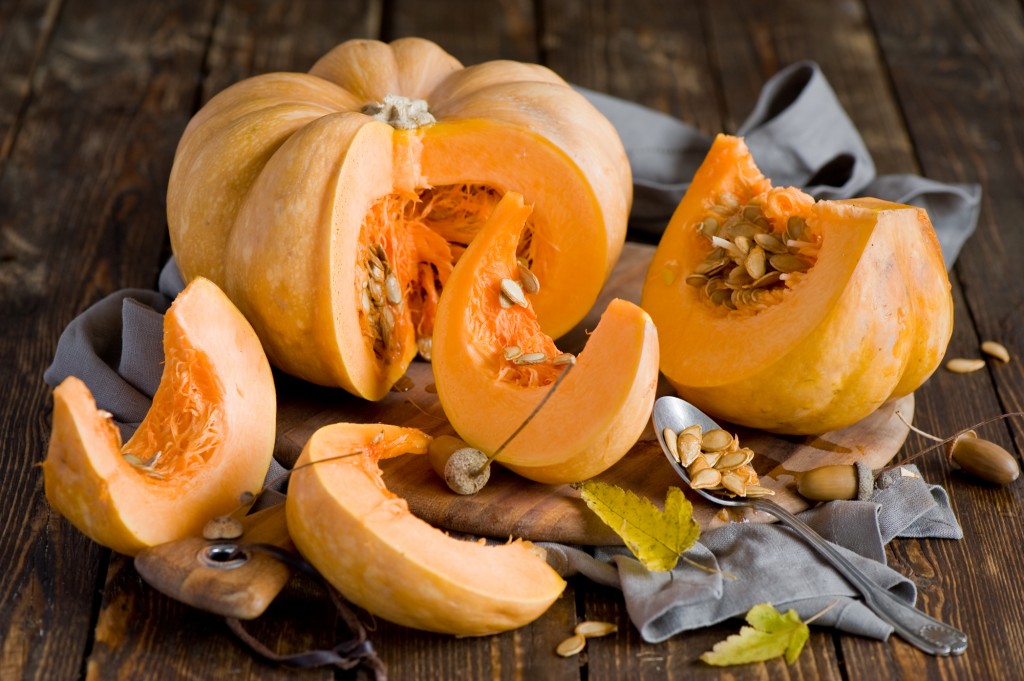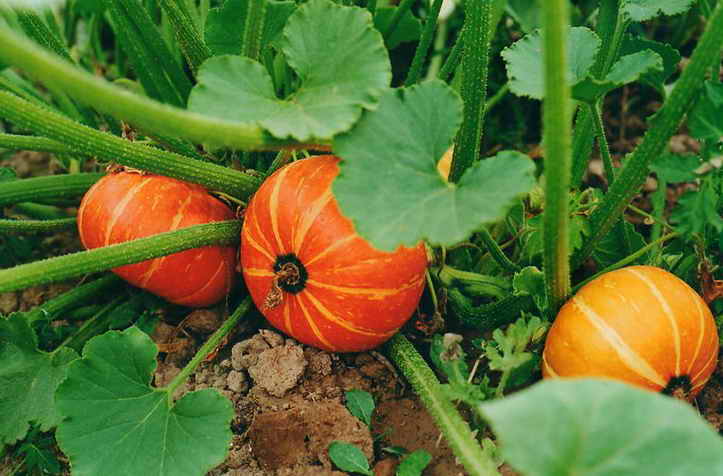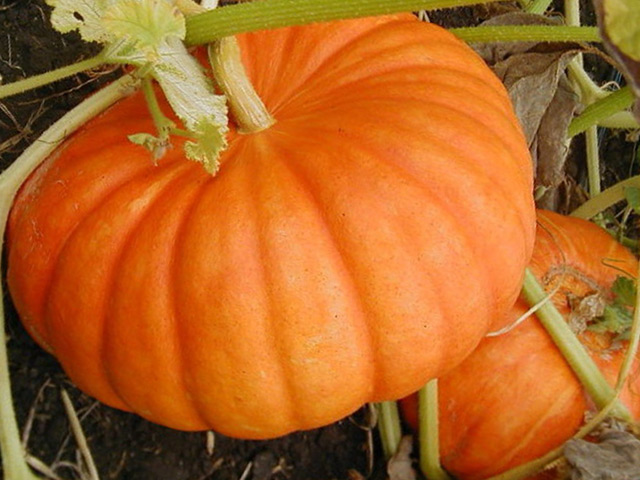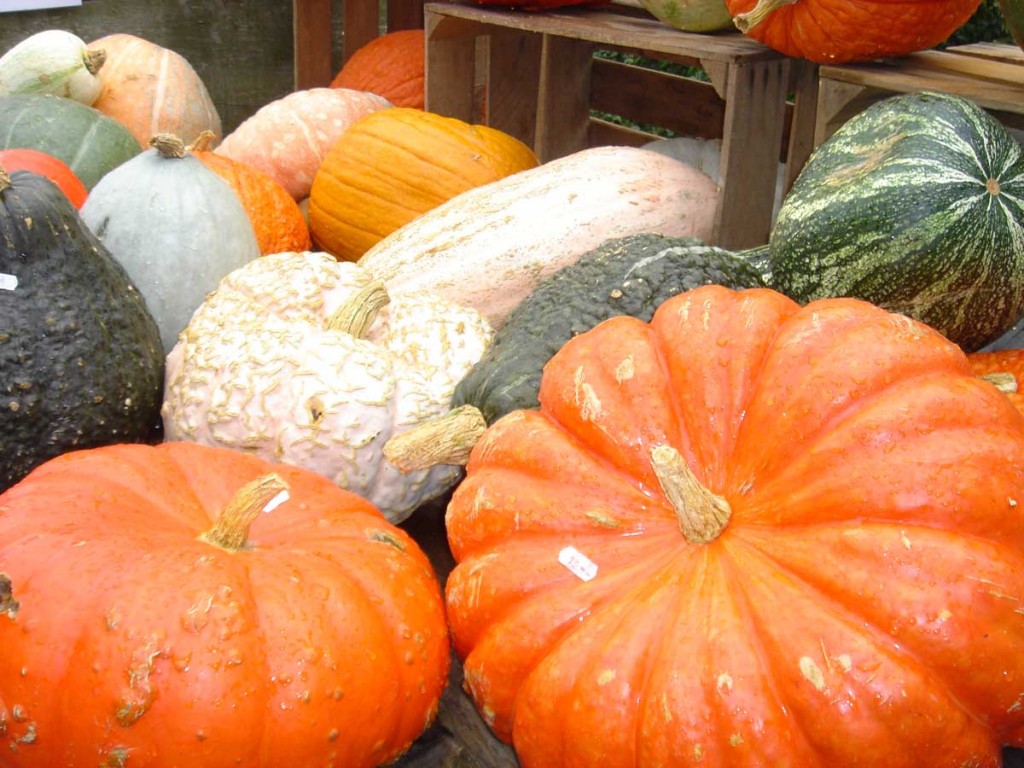How to set up growing and caring for pumpkin in the open field
Content
Which variety to choose
Pumpkins are fodder, dining, decorative. All table varieties are:
- hard-barked;
- large-fruited;
- nutmeg.
Muscat are considered the most delicious because of the highest sugar content. They are thermophilic (which is why they are grown by seedlings in our country), thin-skinned, round and elongated. Hardy varieties are frost-resistant, perfectly stored until the next harvest. Large-fruited can grow to huge sizes, they are usually round, slightly flattened, divided into segments.
There are many varieties that can be grown in the suburbs, the middle lane, even the northern regions without much tweaks. "Smile" is one of the earliest large-fruited varieties. Rounded orange fruits with light stripes grow up to 3 kg, their flesh is bright orange, high carotene content, ripen in 85 days, do not suffer from temperature extremes.
The firm variety "Gribovskaya bush 189" ripens on 80-85 days, grows compactly, does not give long lashes, easily tolerates small frosts, the pulp is juicy, yellowish-orange, and looks more like a vegetable marrow. Altair and Rossiyanka are medium-ripening large-fruited varieties, ripening occurs in 100-115 days (Rossiyanka can ripen even 90 days after planting), juicy, well stored.
For 90-100 days the pumpkin "Shrub orange" ripens, has a medium sweet crunchy yellow pulp, is resistant to temperature extremes, the fruit can grow up to 4.5 kg.
Pumpkins "Almond", "Khutoryanka" are unpretentious, ripen in 120 days. "Premiere", "Kherson", "Universal" ripen perfectly in the open ground of our gardens.The best variety for seeds is Yuzhny. And from Muscat gardeners prefer "Muscat", "Pearl", "Vitamin", "Spanish Guitar". The fruits of these varieties ripen in 120 days or more, they are considered the best.
Seed and seedling preparation
Seeds need to be taken only fresh, you can check them for germination before sowing. Usually, each summer resident has his own preferences in the preparation of seeds: some soak the seeds with diluted fertilizers, others consider it a chemical poisoning. Everyone has their own agrotechnical experience, everyone makes decisions himself - he himself and harvests the crop. But there are certain points that are common to the preparation of all seeds that should be adhered to. So, it is better to warm the seeds in hot water (60 °) for several hours, soak for 1 hour in a solution of potassium permanganate for disinfection. Then you can put it in sawdust or cheesecloth, periodically wetting, wait until the seeds "naklyut", and only then place them in the ground (beak down).
For seedlings, take plastic cups, their diameter should be 10-15 cm, you can take other containers, for example, bottles, cut off the bottom, cut into the parts you need in length and put on a pallet. When transplanting, you cannot damage the roots, it is better to cut a glass, and plant a plant with an earthen lump. But if you grow seedlings in a dish without a bottom, you can plant it directly from this dish, it will protect the seedling from bears.
Air soil is poured into the cups up to half, for it they take sod soil (1 part), peat (1 part), humus (2 parts). The seeds are buried 5 cm, and the cups are exposed in the sun. The seeds will sprout in a few days. On days 10-12, the sprouts must be carefully rolled up in a spiral, placed in cups and covered with earth until the cotyledon leaves.
Video "All about growing pumpkin"
Preparing the soil
At the end of May, you can already plant seedlings with three leaves. The site should be ready for sowing or planting by this time. The place for the pumpkin should be well lit by the sun. It is not grown after sunflowers or melons. It is best if beans, corn, carrots grew on the site last year. The pumpkin should not come back here for 4-5 years.
Since the fall, fertilizers are introduced into the soil and plowed. It is good to grow pumpkin on a compost heap, rotted garbage, from above you will only need to fill up the earth with ash. Wells are prepared in the ground, each 10 cm deep, at a distance of 70 cm from each other, and 1.5 m between the rows. Each hole is enriched with compost or humus, adding at least 2 kg just before planting, spilling well with warm water. A plant is planted in such a liquid porridge, and the earth around is mulched.
Growing and care
Regular pumpkin care involves proper watering, soil fertilization and timely pinching. Usually, the plant (not bushy) produces the main whip and several lateral ones. Only 2 side ones are left, on each - no more than 2-3 fruits, after 5 leaves after the last fruit, pinch the twig. If you want a huge fruit, you can leave only one ovary.
Pour warm water over the pumpkin into the groove around the stem. It is believed that the moisture-loving pumpkin does not tolerate drought well, but it cannot be overfilled. It is recommended to feed pumpkin often - every 2 weeks, and depleted soil - every week.
They start with organic fertilizers, and then alternate them with mineral fertilizers. Organic ones are prepared like this: in a bucket of water they are stirred with 2 liters of slurry, 40 g of superphosphate and 50 g of wood ash. For mineral feeding, 20 g of ammonium nitrate, 40 g of superphosphate and 20 g of potassium salt are dissolved in 10 liters of water. Each plant should receive an increasing dose: from 1 liter in spring to 5 liters at the end of summer. When grown outdoors, pumpkin does not require any special care, whether sown or transplanted.
Tips
- the first week after planting in open ground is the most difficult to grow, the pumpkin must be covered with caps made of paper or plastic bottles from the cold;
- after rain or before watering, it is advisable to loosen the soil around the stem, going deeper into the ground by 10-12 cm;
- lashes can be sprinkled with damp earth to prevent the wind from turning them over;
- in a ripe fruit, the stalk looks like a cork, and the bark becomes very hard;
- pumpkins can be grown near fences and outbuildings, letting them curl on the wall, and tying the fruits themselves with nets;
- under the ripening fruits, you can put a waterproof material so that they do not rot on damp ground.
Video "Growing and pinching a pumpkin"
To get the maximum yield of a given crop, you should know how to properly grow it and take care of it. All this is briefly but succinctly described in the video.




